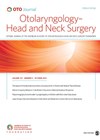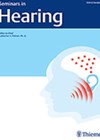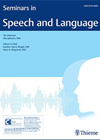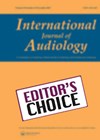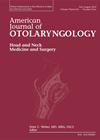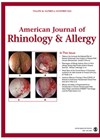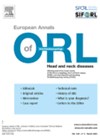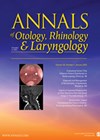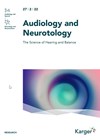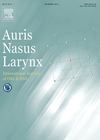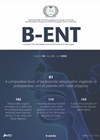
Journal Reviews archive for 2023
Does middle turbinate resection affect olfaction in endoscopic transsphenoidal surgery?
The middle turbinates (MT) are sometimes partially resected during endoscopic transnasal transsphenoidal pituitary surgery to improve surgical access. Some outfracture the middle turbinates instead. This article presents results of the first prospective randomised study, investigating the effects of such surgery...
Hurdle jumping
This article deserves a little attention, rather like settling into conversation. As the writers state, listening is an effort and is a tricky field of study when combining multiple physiological measures. In order to gain an understanding, they suggest: consider...
I saw it on the internet: gathering evidence for clinical decision making
Evidence-based practice is often described as the integration of three sources of information to inform clinical practice, namely: 1) research evidence/practice guidelines; 2) client preferences/needs, and: 3) clinical experience. Speech and language therapists have reported a lack of time and...
Hearing difficulties and memory problems
Since the Lancet Commission report in 2020, we have all been aware that untreated hearing loss is potentially one of the biggest modifiable risk factors for dementia in midlife. Hearing loss is also associated with other risk factors for dementia,...
Extracapsular dissection alone for low-grade malignancies of the parotid gland – oncologically sound?
The general treatment strategy advocated for a primary carcinoma of the parotid gland is surgical resection +/- adjuvant radiotherapy. A selective neck dissection is usually recommended in all cases of parotid malignancies, except for small, low-grade tumours. In this paper,...
The future of biologics?
This paper takes a deep dive into how eosinophilia affects the responsiveness of the host to the two monoclonal antibodies mepolizumab and bendralizumab, both of which are active against IL5. We know that eosinophils are attracted and trapped into the...
The never-ending vertigo
The authors comment on the Barany Society guidelines for bilateral vestibulopathy (BV). This is one of the murky entities of vestibulogy. By definition, patients will eventually lose vestibular function and don’t experience any vertigo. However, some patients still get recurrent...
Dacryocystorhinostomy revisited
In this technical variant, instead of seeking the lacrimal sac, the authors describe a retrograde technique. They first identify the nasolacrimal duct at the level of the most anterior insertion of the inferior turbinate in the lateral nasal wall. The...
Strength of evidence in otolaryngology research – do women make the difference?
Clinicians around the world understand the need for research and publication of gathered evidence to inform practice and improve patient outcomes. The introduction of the Oxford Centre for Evidence-based Medicine (CEBM) Levels of Evidence guideline in 2011, has been invaluable...
Softband vs. adhesive adapter in children with unilateral microtia and atresia
A bone conduction device is a well-established treatment indicated for patients with unilateral microtia and canal atresia. There are a variety of nonsurgical bone conduction hearing aids (BCHAs) with different coupling methods (softbands/adhesive adapter/spectacles). There appears to be uncertainty of...
Advances in auditory implants
This article provides an overview of auditory implants. Implanted auditory devices may be classified into bone conduction implants (BCI) and active middle ear implants (AMEI) that stimulate cochlear hair cells, and cochlear implants (CI) that stimulate neural structures. CIs bypass...
Conductive hearing loss and temporal processing
This Turkish study looked at the effect of using hearing aids on auditory temporal processing (the ability of the hearing system to process the temporal properties of a sound stimulus in a certain period of time) in conductive hearing loss....

